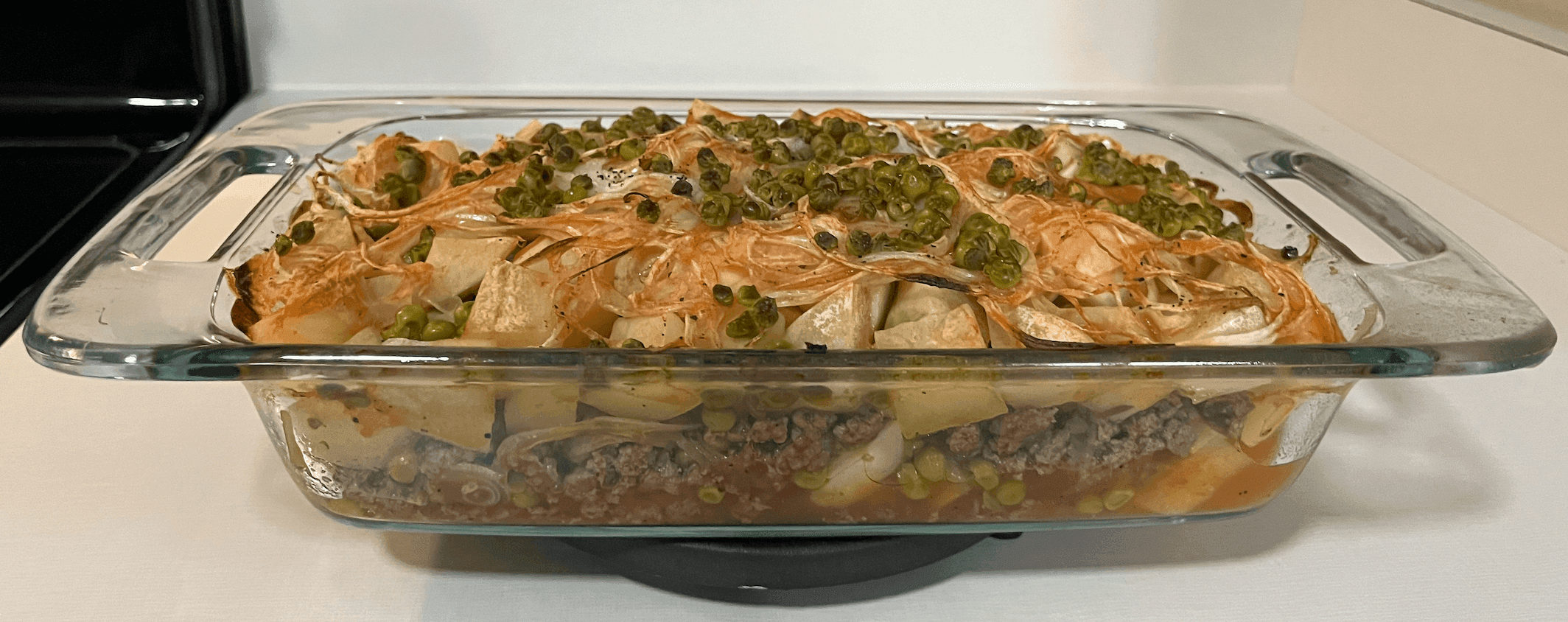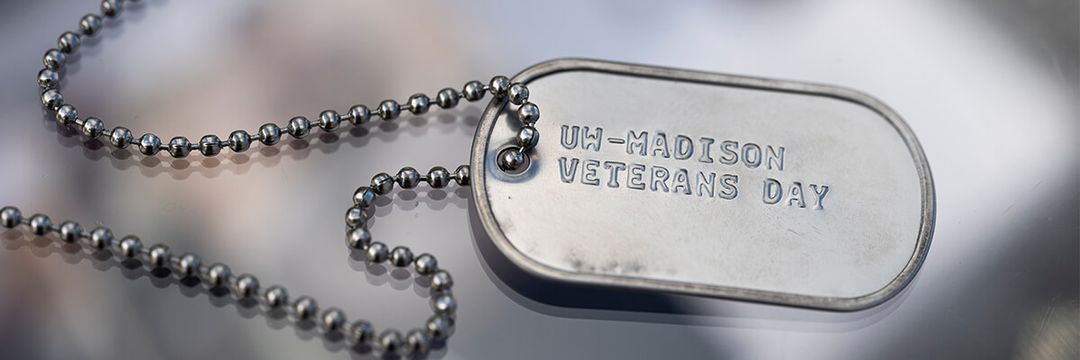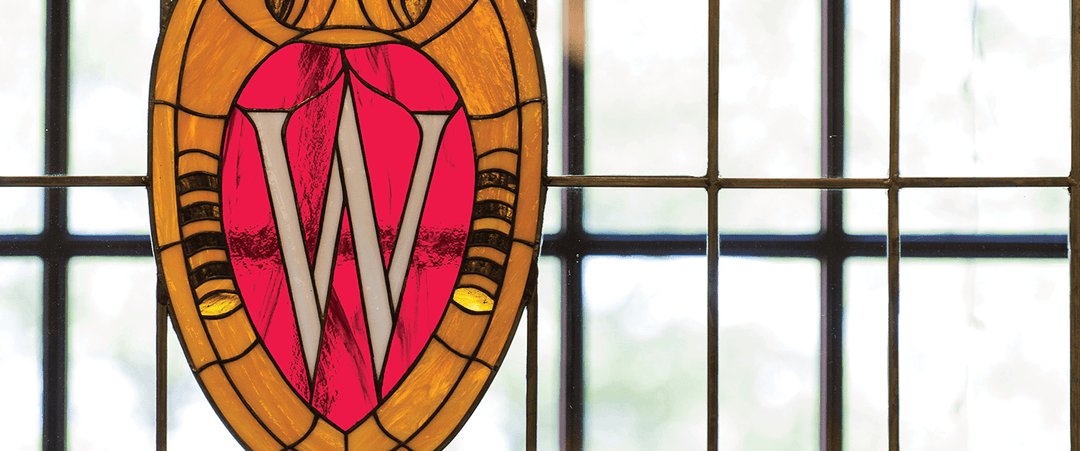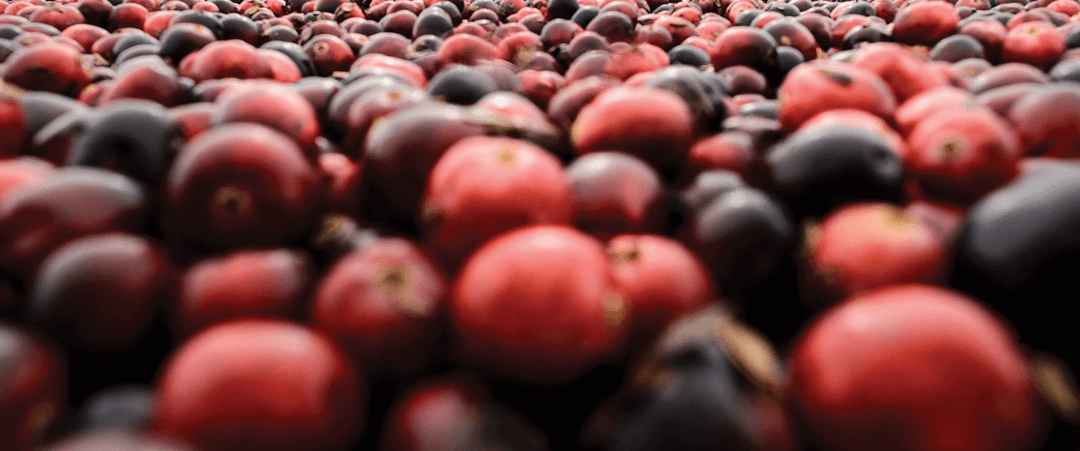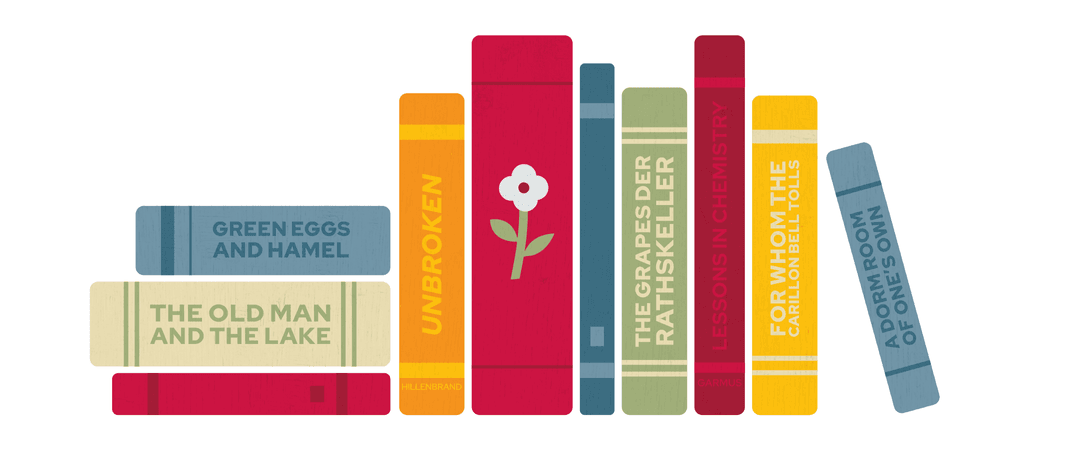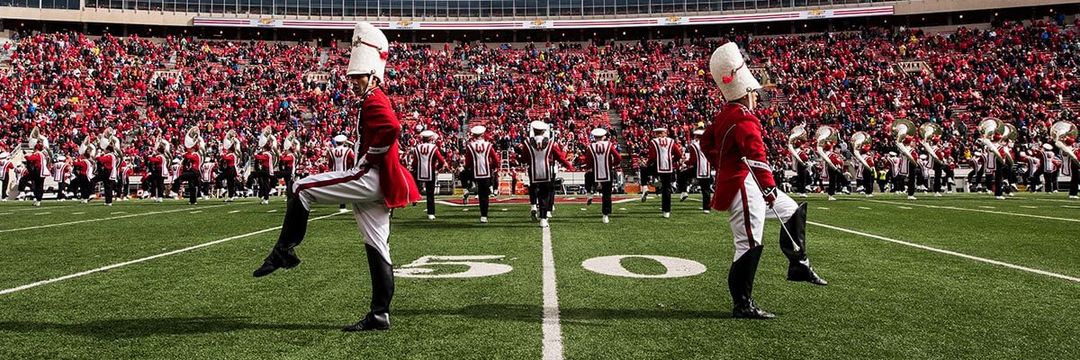Ingredients
1 lb. hamburger
1 onion, sliced thin
1 small can of peas
3 medium-sized potatoes
1 small can of tomato soup
Salt and pepper
Procedure
Brown hamburger. Place a layer in the bottom of pan, then a layer of raw potatoes, onion, and peas. Alternate the layers until all the ingredients are used. Dilute tomato soup with one can of water. Pour over top and bake 1 hour in a 350°F oven.
Review
If you’ve been scared off by a few of our previous recipes, I have some positive news: there isn’t a drop of mayonnaise, gelatin, or steak sauce in this one. But, if the name “rainbow casserole” left you with visions of fresh, colorful vegetables, prepare to be disappointed.
Straight out of the 1955 Elizabeth Waters Cookbook, what this recipe lacks in complex flavors it makes up for in ease. Apart from browning the ground beef, the only other “cooking” involves chopping produce and opening a couple of cans. Plus, depending on your pantry, you might already have all these ingredients on hand.
Since this was my first foray into the world of casseroles, I did a bit of preliminary research. First, what makes a casserole a casserole? The internet seemed to agree on five necessary components: protein, starch, vegetable, sauce, and cheese. This recipe scores three (and a half) points for ingredients as it omits dairy, and the tomato-and-water combination wasn’t exactly sauce-like.
The only other thing you need for a casserole is a deep baking dish. This is where my first misstep occurred. I don’t own a casserole dish, so I had to choose between two other glass baking dishes. I chose the smaller of the two because with only a pound of beef in the recipe, it was impossible to create layers in the larger, 9x13-inch dish.
After I layered all the ingredients, my selection proved to be erroneous. Although I did have a beautiful creation that resembled a bagel adorned with lox, onions, and capers , the pan wasn’t quite deep enough, leaving me with a top layer exposed above the tomatoey waterline.
Next, I debated whether to cover the casserole, but I went with the recipe as written, in the hope that some of the soup-water mixture would cook out. This hope went unrealized, so I drained most of the remaining liquid before serving.
At this point, a group of unsuspecting friends arrived for what I had vaguely described as a “tasting.” I felt this prepared them for food but absolved the casserole (and me) of the responsibility of providing a full meal. Everyone commented on how great my kitchen smelled, but the joviality ended once they locked eyes on the casserole. I quickly scooped it into bowls before they could give eating it a second thought.
The shallow dish meant the top layer of potatoes was slightly underdone, but my friends preferred the browned, crispier onions on top to the ones that were submerged in the liquid. The bottom layer was a nice mix of soft vegetables and beef that some described as “cozy” and “homey.”
Sadly, we all agreed that the primary flavor profile was … bland. Salt and pepper didn’t make a significant difference once everything was covered in watered-down soup, which left behind only a slight whiff of tomato. But, with added seasoning (I opted for extra salt, pepper, and garlic powder) and condiments (a friend who shall remain nameless added ketchup), people even came back for seconds.
If I were to make this middling recipe again, I would make a few adjustments:
- Use the larger baking dish but double the meat to compensate for the otherwise lackluster layers.
- Find a better “sauce” to bind the casserole together (maybe two cans of soup or less water?).
- Cover the dish for the first 30–45 minutes, but leave it uncovered at the end to crisp up.
- Add more seasoning. Much, much more seasoning.
Overall, rainbow casserole was a decent meal on a cold winter night, and with a few adjustments, I might even make it again. But maybe pick up a pack of Skittles for dessert if you want the full rainbow effect.
